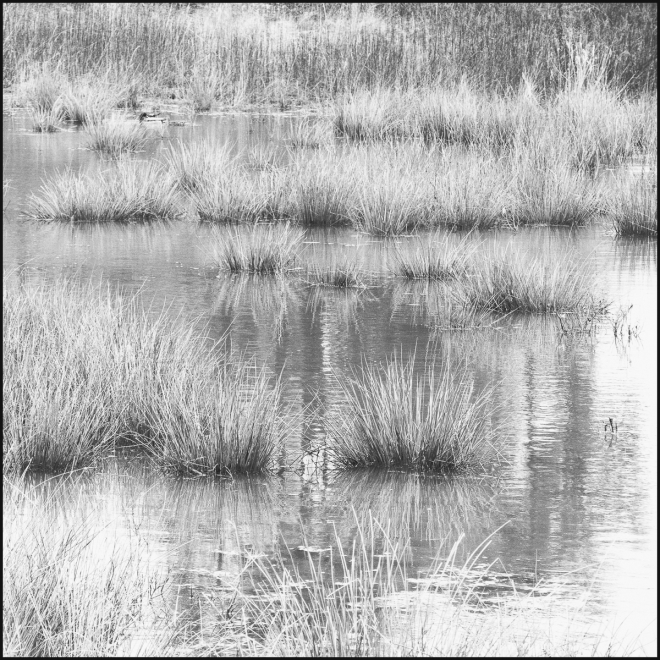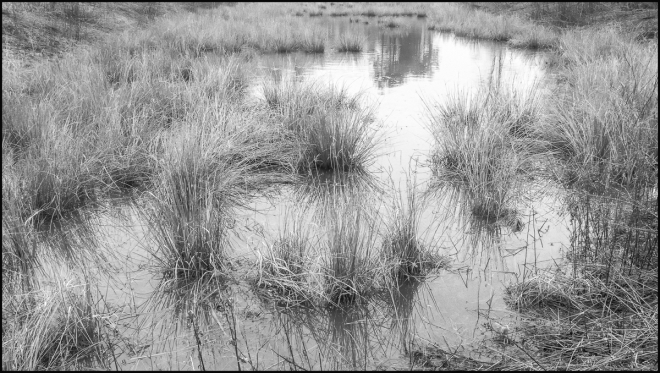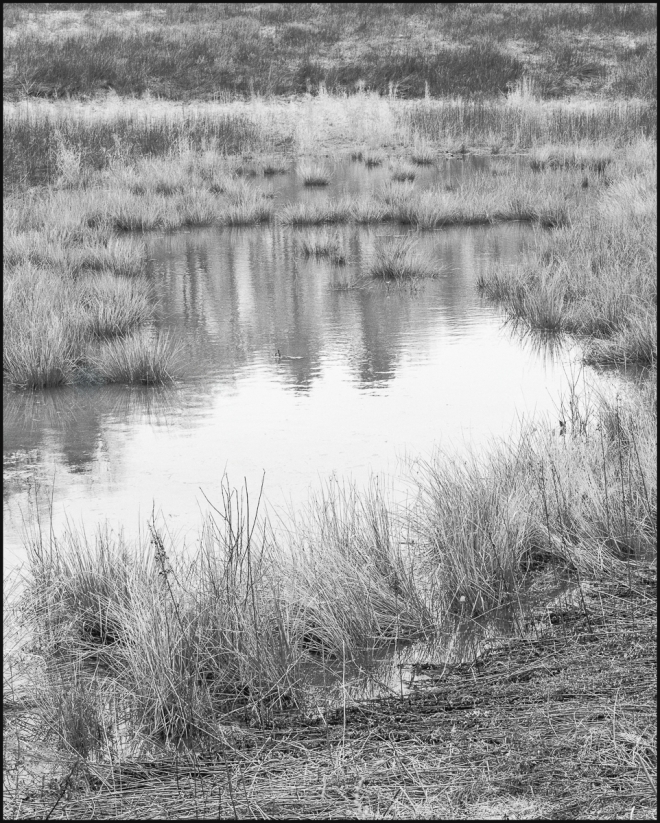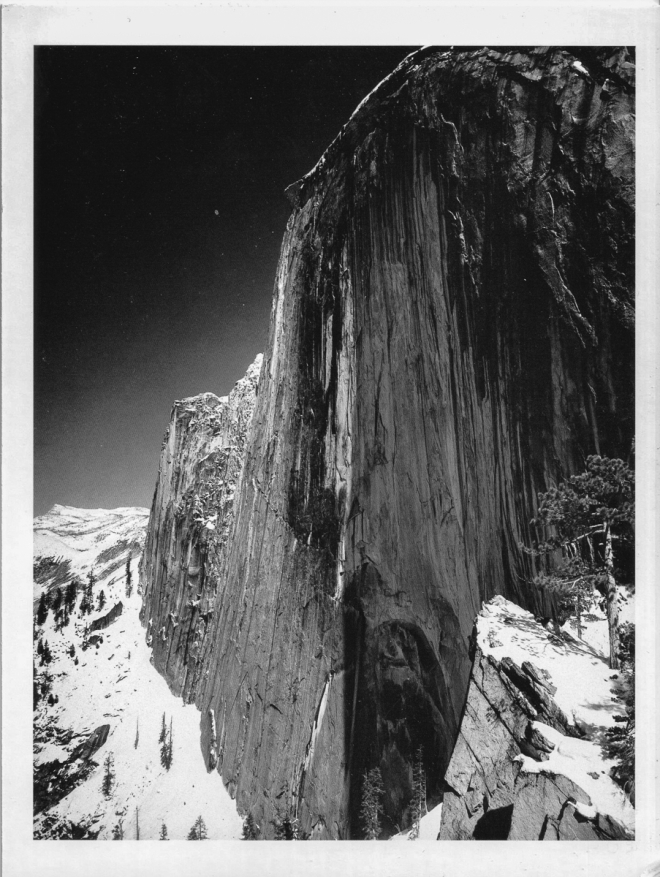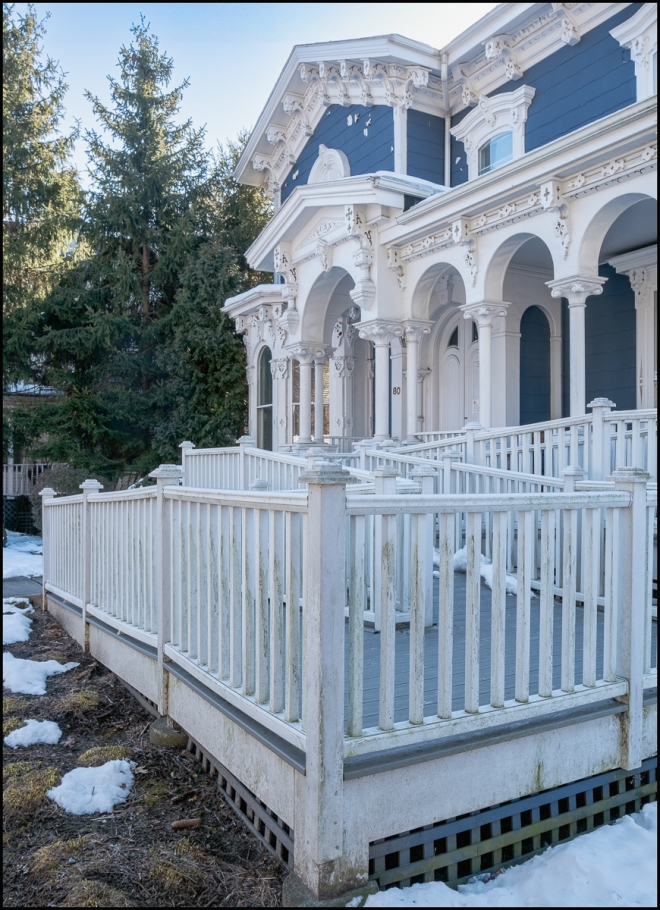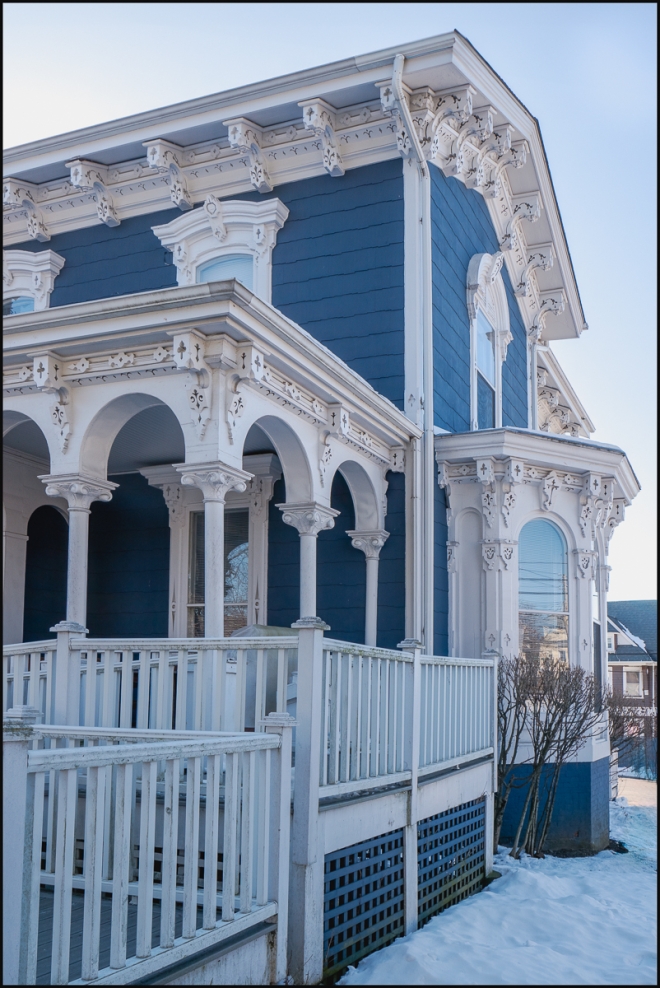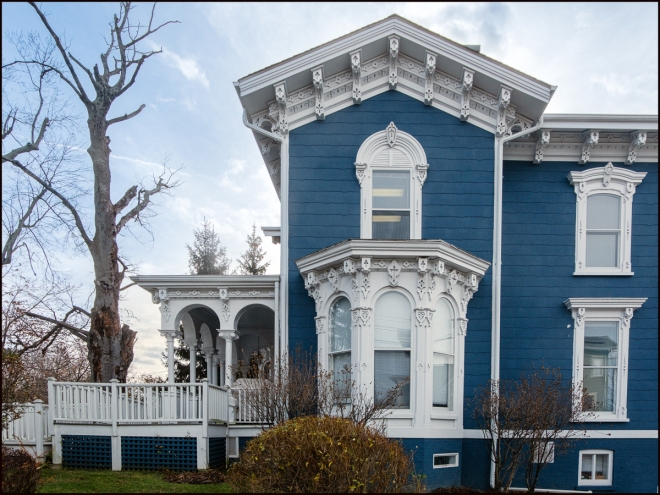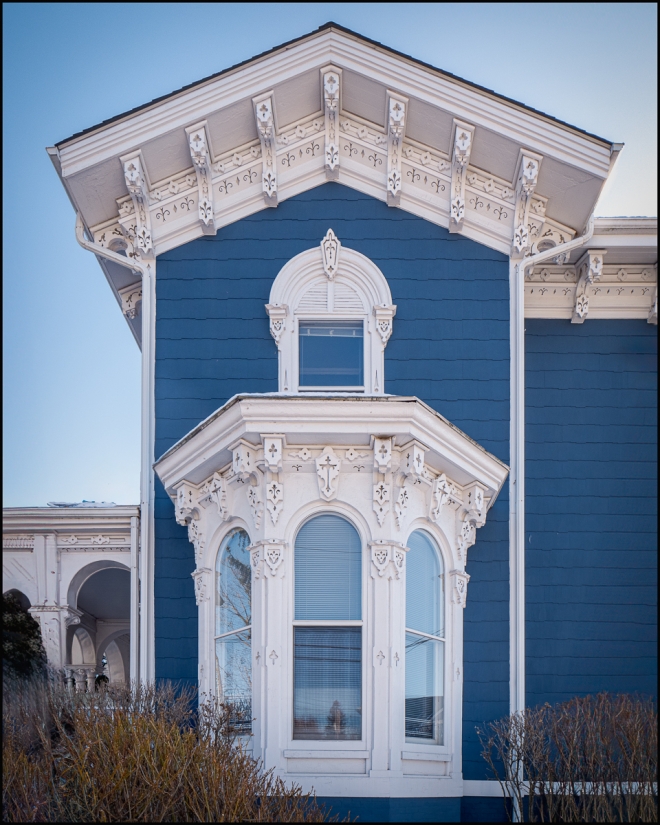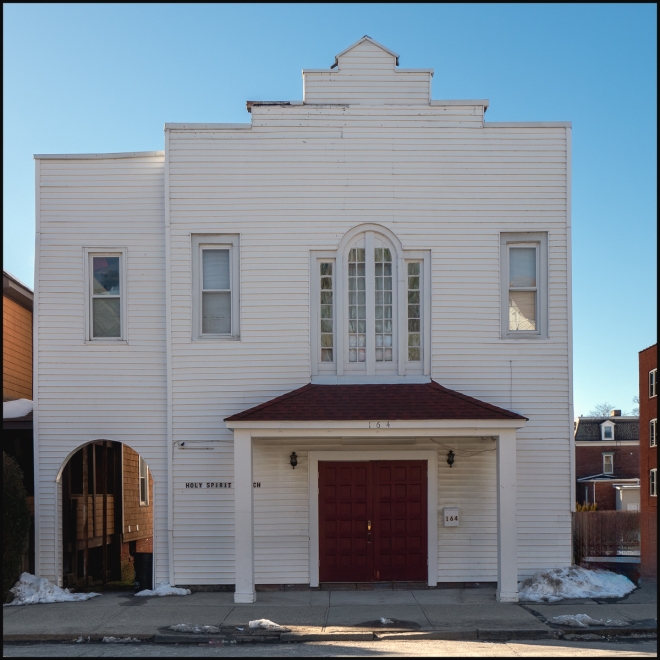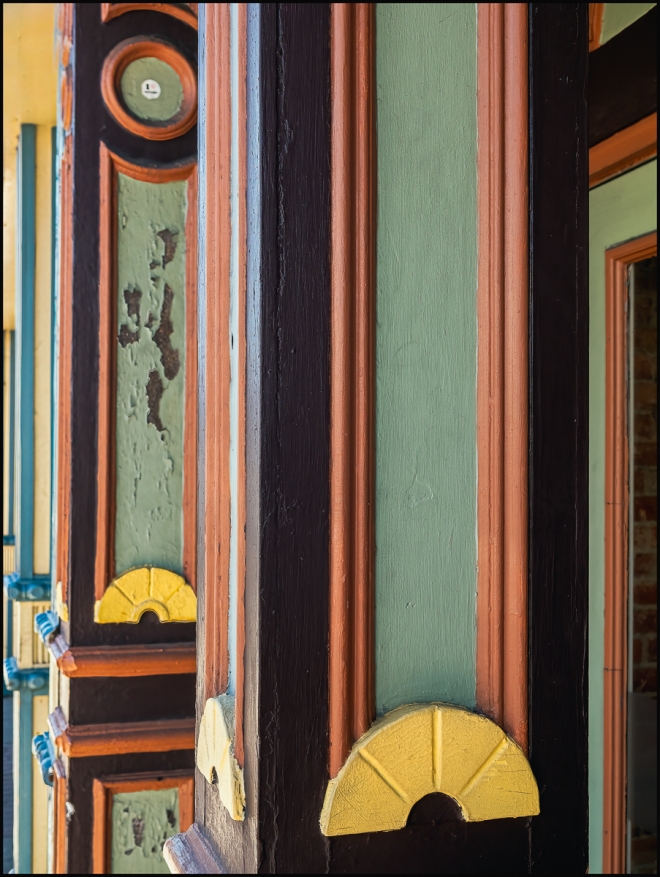For some reason I went out the other day intending to take some pictures of water. As I walked around, I came across this pond. I’ve seen it before, and it seems to come and go. Sometimes (as with today) there’s quite a lot of water; and sometimes it appears to be completely dry.
I think it’s a vernal pond:
Vernal pools, also called vernal ponds or ephemeral pools, are seasonal pools of water that provide habitat for distinctive plants and animals. They are considered to be a distinctive type of wetland usually devoid of fish, and thus allow the safe development of natal amphibian and insect species unable to withstand competition or predation by fish. Certain tropical fish lineages (such as killifishes) have however adapted to this habitat specifically.
Vernal pools are a type of wetland. They can be surrounded by many communities/species including deciduous forest, grassland, lodgepole pine forest, blue oak woodland, sagebrush steppe, succulent coastal scrub and prairie. These pools are characteristic of Mediterranean climates, but occur in many other ecosystems.
An inundated rock vernal pool on Enchanted Rock. Note the one inhabited by cacti in the background.
During most years, a vernal pool basin will experience inundation from rain/precipitation, followed by desiccation from evapotranspiration. These conditions are commonly associated with Mediterranean climate such as the Central Valley of California.[1] Vernal pool basins are often characteristics of Mediterranean climates, but occur in many other ecosystems, such as forested areas of the Canadian Shield, where they are difficult to identify because of the forest canopy.[2] Most pools are dry for at least part of the year, and fill with the winter rains, spring snowmelts and rising water tables. Some pools may remain at least partially filled with water over the course of a year or more, but all vernal pools dry up periodically. Typically, though, a vernal pool has three phases each year: it is inundated in the winter (inundated phase) with the vernal pool holding onto the water from 10–65 days, it dries slowly during the spring (flowering phase), and it dries completely during the summer (dry phase). Vernal pools favor native species because many non-native species cannot tolerate the extreme seasonal changes in environmental conditions. (Wikipedia)
Whatever it is I thought it would make a worthwhile subject
Taken with a Panasonic Lumix GX85 and Lumix G Vario 14-140 f3.5-5.6

